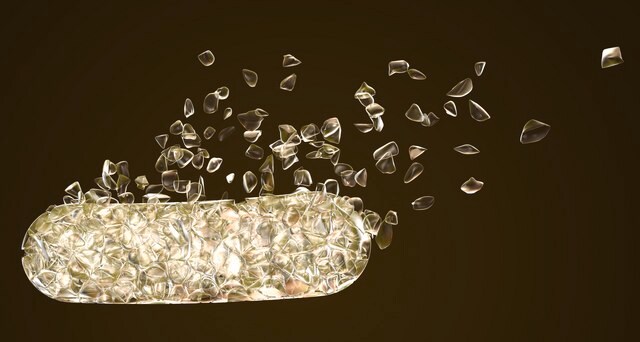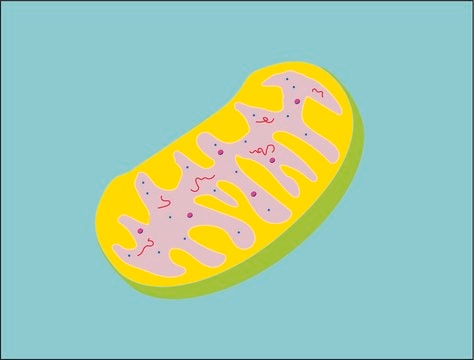539790
ProteoExtract® Subcellular Proteome Extraction Kit
Synonym(s):
S-PEK Kit
Sign Into View Organizational & Contract Pricing
All Photos(1)
About This Item
UNSPSC Code:
41106500
NACRES:
NA.77
usage
sufficient for 20 extractions
manufacturer/tradename
Calbiochem®
storage condition
OK to freeze
avoid repeated freeze/thaw cycles
technique(s)
fractionation: suitable
input
sample type: mammalian tissue(s)
sample type: mammalian cultured cells
shipped in
ambient
storage temp.
2-8°C
General description
Fast and reproducible extraction of subcellular proteomes from mammalian cells
ProteoExtract® Subcellular Proteome Extraction Kit (S-PEK) is designed for fast and reproducible extraction of subcellular proteomes from adherent and suspension-grown mammalian cells. The S-PEK takes advantage of the different solubilities of certain subcellular compartments in the four selected reagents. In the case of adherent cells, the procedure is performed directly in the tissue culture dish without the need for cell removal. Cells or the parts of the cells remain attached to the plate during sequential extraction of subcellular compartments, until the appropriate extraction reagent is used. Thus, the early destruction of the cellular structure by enzymatic or mechanical detachment of cells from the tissue culture plate and any mixing of different subcellular compartments is prevented. For suspension-grown cells, extraction starts with gentle sedimentation and washing of the cells. The stepwise extraction delivers four distinct protein fractions from one sample:
Sample size: 3-5x106 or 25-50 mg tissue.
ProteoExtract® Subcellular Proteome Extraction Kit (S-PEK) is designed for fast and reproducible extraction of subcellular proteomes from adherent and suspension-grown mammalian cells. The S-PEK takes advantage of the different solubilities of certain subcellular compartments in the four selected reagents. In the case of adherent cells, the procedure is performed directly in the tissue culture dish without the need for cell removal. Cells or the parts of the cells remain attached to the plate during sequential extraction of subcellular compartments, until the appropriate extraction reagent is used. Thus, the early destruction of the cellular structure by enzymatic or mechanical detachment of cells from the tissue culture plate and any mixing of different subcellular compartments is prevented. For suspension-grown cells, extraction starts with gentle sedimentation and washing of the cells. The stepwise extraction delivers four distinct protein fractions from one sample:
- Cytosolic fraction (F1)
- Membrane/organelle protein fraction (F2)
- Nucleic protein fraction (F3)
- Cytoskeletal fraction (F4)
Sample size: 3-5x106 or 25-50 mg tissue.
Features and Benefits
- Stepwise extraction resulting in four distinct subcellular proteomes from one sample
- Highly reproducible
- No ultracentrifugation steps
- Fast—needs just 2 hours with 45 minutes hands-on time
- Produces proteins suitable for functional studies
Components
Wash buffer, Extraction Buffer I, Extraction Buffer II, Extraction Buffer III, Extraction Buffer IV, Protease Inhibitor Cocktail, Benzonase® Nuclease (Cat. No. 71206), and a user protocol.
Warning
Toxicity: Multiple Toxicity Values, refer to MSDS (O)
Principle
The Calbiochem ProteoExtract Subcellular Proteome Extraction Kit is designed for the subcellular extraction of mammalian proteins from the cytosolic, organelle and membrane, nuclear, and cytoskeletal fractions of adherent tissue culture cells, suspension tissue culture cells, frozen cell pellets, and fragmented tissues.
Preparation Note
Kit Components Needed for One Extraction
The volume of each component required for one subcellular extraction depends on the amount of starting material.
The volume of each component required for one subcellular extraction depends on the amount of starting material.
Appropriate samples types include:
- Adherent tissue culture cells
- Suspension-grown tissue culture cells
- Frozen cell pellets
- Fragmented tissue
Storage and Stability
Prior to performing the extraction protocol all frozen buffers must thawed at room temperature. A water bath set at 25°C will aid in the thawing process. After thawing, mix the buffers well gentle shaking or vortexing.
Other Notes
Zhang, L., and Insel, P. A. 2004. J. Biol. Chem.279, 20858.
Yuan, X., et al. 2002. Electrophoresis23, 1185.
Butcher, et al. 2001. J. Immunol.167, 2193.
Ott, et al. 2001. Pharmacogenomics J.1, 142.
Allen, L. 2000. Nature405, 819.
Dunn, M. J. 2000. Electrophoresis 6.
Rabilloud, T. 2000. Two-dimensional Gel Electrophoresis and Identification Methods Springer-Verlag
Mejdoubi, et al. 1999. Biochem. Biophys. Res. Comm.254, 93.
Reymond, et al. 1997. Electrophoresis18, 2842.
Laemmli, U. K. 1970. Nature227, 680.
Lowry, et al. 1951. J. Biol. Chem.193, 265.
http://www.expasy.ch/ and http://www.expasy.proteome.org.au
Yuan, X., et al. 2002. Electrophoresis23, 1185.
Butcher, et al. 2001. J. Immunol.167, 2193.
Ott, et al. 2001. Pharmacogenomics J.1, 142.
Allen, L. 2000. Nature405, 819.
Dunn, M. J. 2000. Electrophoresis 6.
Rabilloud, T. 2000. Two-dimensional Gel Electrophoresis and Identification Methods Springer-Verlag
Mejdoubi, et al. 1999. Biochem. Biophys. Res. Comm.254, 93.
Reymond, et al. 1997. Electrophoresis18, 2842.
Laemmli, U. K. 1970. Nature227, 680.
Lowry, et al. 1951. J. Biol. Chem.193, 265.
http://www.expasy.ch/ and http://www.expasy.proteome.org.au
Legal Information
Benzonase is a registered trademark of Merck KGaA, Darmstadt, Germany
CALBIOCHEM is a registered trademark of Merck KGaA, Darmstadt, Germany
PROTEOEXTRACT is a registered trademark of Merck KGaA, Darmstadt, Germany
Hazard Classifications
Aquatic Chronic 3 - Eye Irrit. 2 - Skin Irrit. 2
WGK
WGK 3
Certificates of Analysis (COA)
Search for Certificates of Analysis (COA) by entering the products Lot/Batch Number. Lot and Batch Numbers can be found on a product’s label following the words ‘Lot’ or ‘Batch’.
Already Own This Product?
Find documentation for the products that you have recently purchased in the Document Library.
Customers Also Viewed
Mohamed-Bilal Fares et al.
Human molecular genetics, 23(17), 4491-4509 (2014-04-15)
A novel mutation in the α-Synuclein (α-Syn) gene "G51D" was recently identified in two familial cases exhibiting features of Parkinson's disease (PD) and multiple system atrophy (MSA). In this study, we explored the impact of this novel mutation on the
Feng Gao et al.
Oncology reports, 37(2), 1203-1211 (2017-01-12)
Resveratrol, one of the major polyphenols found in red wine, is suggested to have a role as a chemo-prevention or chemotherapy agent in various human cancer models. Herein, we report that resveratrol has a profound antitumor effect on human hepatocellular
Rooban B Nahomi et al.
Experimental eye research, 190, 107864-107864 (2019-11-05)
Acylated lysine residues represent major chemical modifications in proteins. We investigated the malonylation and propionylation of lysine residues (MalK, PropK) in the proteins of aging human lenses. Western blot results showed that the two modifications are present in human lens
Jun Guo et al.
Nature communications, 9(1), 612-612 (2018-02-11)
Ultraconserved (uc) RNAs, a class of long non-coding RNAs (lncRNAs), are conserved across humans, mice, and rats, but the physiological significance and pathological role of ucRNAs is largely unknown. Here we show that uc.372 is upregulated in the livers of
Sha Jin et al.
Molecular cancer research : MCR, 17(10), 2126-2138 (2019-07-25)
Pancreatic ductal adenocarcinoma (PDAC) stroma, composed of extracellular matrix (ECM) proteins, promotes therapy resistance and poor survival rate. Integrin-mediated cell/ECM interactions are well known to control cancer cell survival, proliferation, and therapy resistance. Here, we identified β8 integrin in a
Our team of scientists has experience in all areas of research including Life Science, Material Science, Chemical Synthesis, Chromatography, Analytical and many others.
Contact Technical Service



